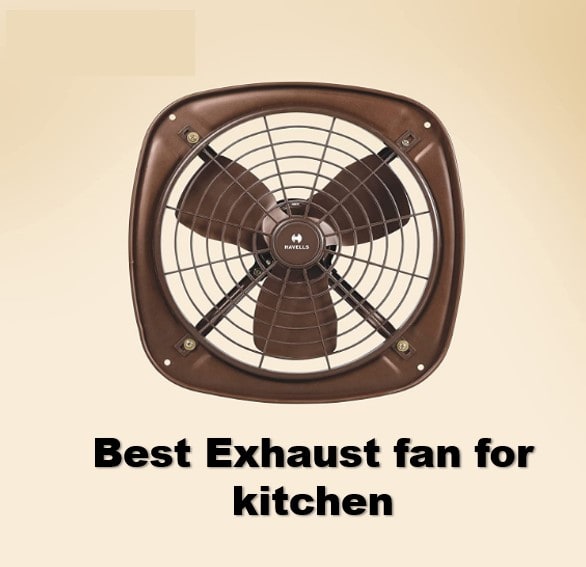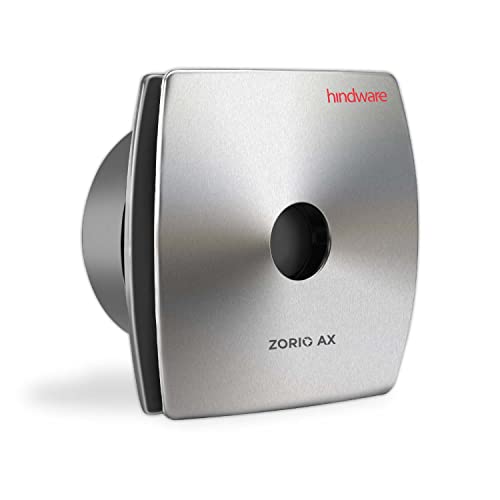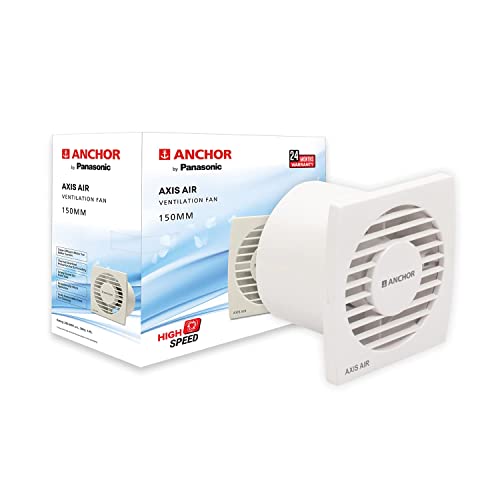In the heart of every home, the kitchen often bustles with life. From sizzling steaks to simmering sauces, the air can quickly fill with delightful, albeit sometimes overwhelming, smells. One important, but often overlooked, component that can make or break your cooking experience is the humble exhaust fan.
Choosing the right exhaust fan for your kitchen is more than just a functional decision. It can influence your kitchen’s design aesthetic and, more importantly, your family’s health by ensuring proper ventilation. So, let’s explore how to select the perfect exhaust fan for your kitchen in this detailed guide.
Short on Time, here is our list of Best Exhaust fans.
List of Best Exhaust Fans for Kitchen In India
1. Understand the Importance of a Kitchen Exhaust Fan
Before we dive into what to look for, let’s explore why you need an exhaust fan in your kitchen.
A. Elimination of Smoke and Odor
The primary purpose of an exhaust fan is to eliminate smoke, odors, and other air pollutants generated during cooking. It maintains a clean, fresh, and pleasant kitchen environment, helping your home smell welcoming and inviting.
B. Regulation of Temperature
Exhaust fans play an essential role in controlling the temperature of your kitchen. They help dissipate the heat generated from cooking, making your kitchen a comfortable place to work, even during extensive baking or grilling sessions.
C. Health and Safety
By extracting harmful fumes and gases, such as carbon monoxide, an exhaust fan safeguards the health of the home’s inhabitants. This reduces the risk of respiratory problems and allergies, providing a healthier environment for you and your family.
2. Choosing the Right Type of Exhaust Fan
When it comes to kitchen exhaust fans, there are two main types: ducted (or vented) fans and ductless (or recirculating) fans.
A. Ducted Fans
Ducted fans vent to the outside, removing heat, moisture, and odors from your kitchen completely. They’re more efficient and suitable for heavy-duty cooking but require more complex installation.
B. Ductless Fans
Ductless fans filter the air and recirculate it back into the kitchen. While they’re easier to install and suitable for kitchens where ductwork isn’t possible, they may not handle strong odors and smoke as effectively.
Your choice between these two types will depend on your cooking habits, kitchen size, and the architectural possibilities of your home.
3. Consider the Size of the Exhaust Fan
The size of your kitchen and cooktop helps determine the right size of the exhaust fan. Generally, the fan should be as wide as your cooking range for optimal performance.
4. Evaluate the Fan’s Power (CFM)
CFM (Cubic Feet per Minute) refers to the amount of air the fan can move. More CFM means more air exchange, but also potentially more noise. Balance your needs for power and quiet operation.
5. Noise Level Considerations
Consider the noise level of the fan, measured in sones. A quieter fan (lower zone rating) is generally more desirable, but this should not compromise the efficiency of the fan.
6. Style and Aesthetics
Finally, the design of the fan should blend with your kitchen’s style. Whether it’s a classic hood style, an under-cabinet model, or a sleek, modern downdraft system, choose a design that complements your kitchen’s aesthetic.
7. Budget and Installation
Consider the cost of the fan, the installation process, and the maintenance it will require. Remember, while it might be tempting to save on upfront costs, a cheap, ineffective fan could cost you more in the long run in terms of your health and happiness.
Frequently Asked Questions about Kitchen Exhaust Fans
Q1. Is it necessary to have an exhaust fan in the kitchen?
Yes, it is essential to have an exhaust fan in the kitchen. It helps remove smoke, odors, and harmful gases generated during cooking, providing a healthier and more comfortable environment.
Q2. How do I determine the right size for my kitchen exhaust fan?
The size of your exhaust fan should generally match the width of your cooking range for optimal performance. Also, the fan’s power (measured in CFM) should be sufficient to handle the volume of your kitchen.
Q3. What’s the difference between ducted and ductless exhaust fans?
Ducted fans vent to the outside, removing all unwanted heat, moisture, and odors from your kitchen, while ductless fans filter the air and recirculate it back into the kitchen. Ducted fans are more efficient but require more complex installation.
Q4. How loud are kitchen exhaust fans?
The noise level of an exhaust fan is measured in sones. More powerful fans tend to be louder, but modern designs and technologies have allowed for powerful yet quiet operation. Check the product specifications for the noise level before purchasing.
Q5. What style of the exhaust fan should I choose?
The style should match your kitchen’s overall aesthetic. There are many designs available, from traditional hood styles to sleek, modern systems that can be hidden away when not in use.
Q6. How often should I clean or replace the filters in my exhaust fan?
If you cook regularly, it’s recommended to clean or replace the filters every 2-3 months. However, the frequency may vary depending on the type of filter (mesh, baffle, or charcoal) and your cooking habits.
Conclusion
Buying the right exhaust fan for your kitchen is a decision that affects not only the functionality of your kitchen but also the health and well-being of your household. With this guide, you should now be equipped to make an informed decision about the type, size, power, noise level, and style of exhaust fan that will best suit your needs.
Remember to also consider the installation process and maintenance requirements. As much as this appliance might seem insignificant, it’s a key player in ensuring your kitchen remains the heart of your home, brimming with delicious aromas and free from unwanted smoke and fumes.
Last update on 2024-10-22 / Images from Amazon Product Advertising API











